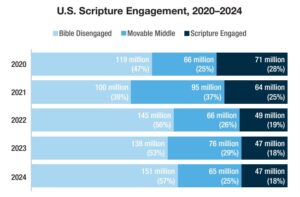
CHICAGO (BP) — A suburban Chicago school district will allow a transgender student access to the girl’s locker room, under a contentious agreement reached Dec. 7 during an emergency school board meeting. The decision to comply with government demands for inclusivity comes after months of back and forth between school officials and the U.S. Department of Education’s Office of Civil Rights.
The OCR found the district violated federal sexual anti-discrimination laws with its policy restricting a biologically male transgender student’s access to female locker rooms. Last month, the OCR told the district it had 30 days to change its policies or face potential litigation and the loss of up to $6 million in federal funds.
The school board for the Township High School District 211 and the OCR reached an initial agreement Dec. 2. But school and federal officials on Dec. 3 went head-to-head on the settlement details, and district Superintendent Daniel Cates announced the following day the district would hold an emergency meeting Dec. 7 to discuss the path forward, “including the potential retraction of the agreement.”
The student, referred to as “Student A,” filed a complaint with the OCR in 2014. Although the school allows the student to use female restrooms at school because of the privacy of stalls, school officials restricted the student, who is still anatomically male, from using the female locker room for changing and showering because they said it would violate other students’ privacy. The OCR investigated and concluded the district violated federal laws against sexual discrimination.
The Dec. 3 agreement gives the student access to the locker room, but within hours of the vote, district and federal officials diverged on the practical application. Cates said the agreement applied only to Student A, only if the student used a privacy curtain in the locker room, and did not change districtwide policy.
“That’s a mischaracterization,” said Catherine Lhamon, Education Department assistant secretary for civil rights. She said the deal applied to all district students, did not hinge on the use of a privacy curtain — though Student A has agreed to use one — and required the district to revise its annual notice of nondiscrimination.
The emergency meeting on Dec. 7 included two hours of public comment followed by a private board meeting. About 600 people attended the public portion. Some expressed support for Student A, calling the school’s policies “institutionalized segregation.” Others said the agreement triggered concerns for their daughters.
“It seems the rights of this one person are trumping the rights of everyone else,” said one father, according to the Chicago Tribune.
School officials decided not to take a vote during emergency meeting, keeping the agreement in place. They said the decision was made, in part, because OCR officials clarified by letter Dec. 7 that the agreement only applied to one student, and not all district students.
But the American Civil Liberties Union (ACLU), which represents the student, said that is not enough.
“We find it impossible that the OCR would allow the district to allow access to our client, while they don’t defend a Student B, or Student C,” said Ed Yohnka, a spokesman for the ACLU of Illinois, according to the Chicago Tribune.
In addition to allowing Student A access to the female locker room, the agreement, lasting through June 2017, requires the school to submit to reporting and monitoring by OCR officials.
Though the agreement does not explicitly state Student A must use a privacy curtain, it says the agreement allows the student access “based on Student A’s representation that she will change in private changing stations in the girl’s locker rooms.”













